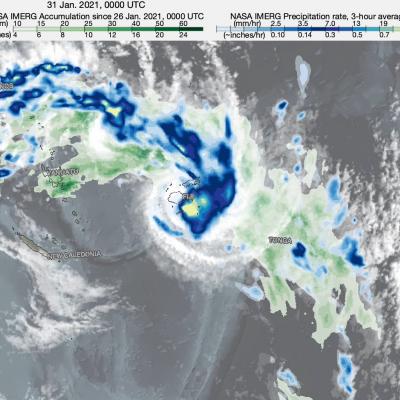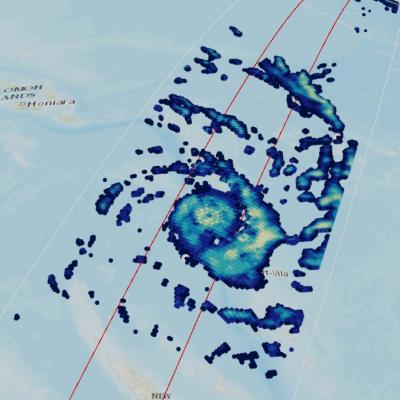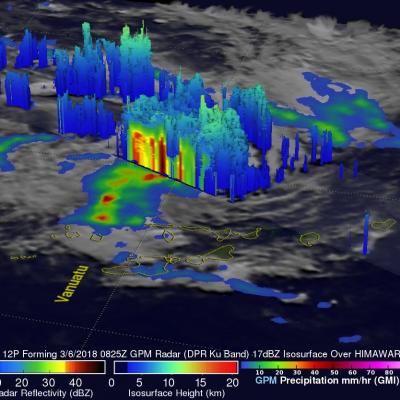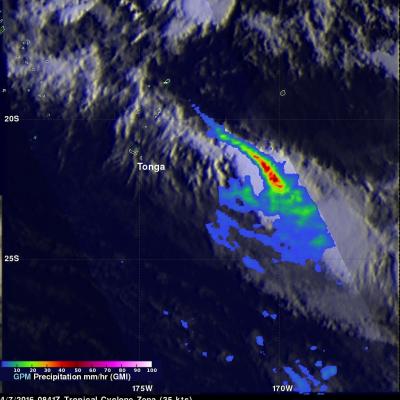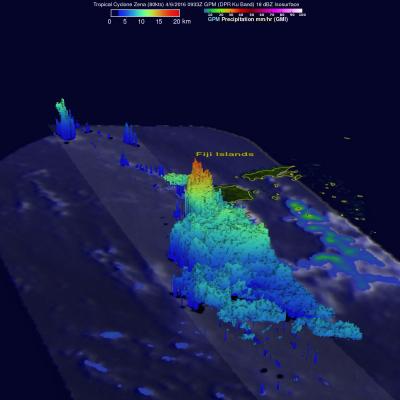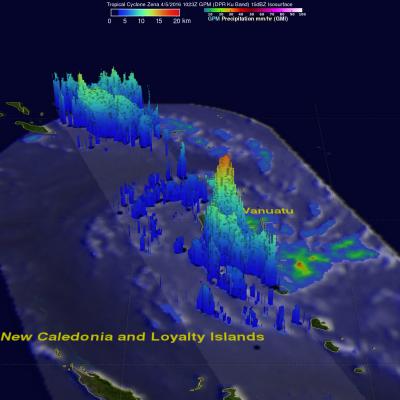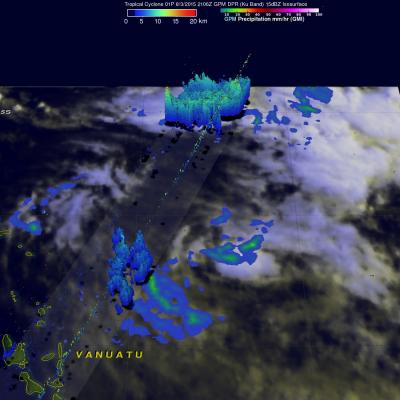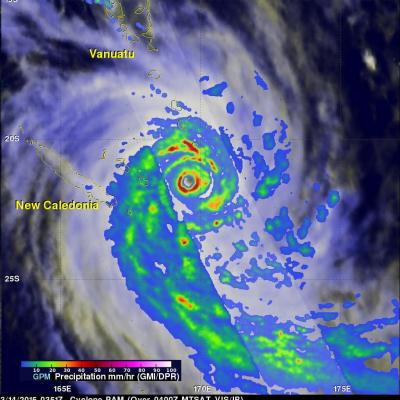GPM Flies Over Category 4 Cyclone Harold in the South Pacific
For more information or to download this public domain video, go to: https://svs.gsfc.nasa.gov/4812#29226 UPDATE 4/9/2020 This animation shows the heavy precipitation associated with Tropical Cyclone Harold as it progressed from the Solomon Islands (upper left) on April 2, 2020, explosively intensified on April 3, reached Vanuatu (center) as a Category 4 storm on April 5 before briefly attaining Category 5 status on April 6 and passing just south of Fiji (center right) on April 7 as a Category 4 storm. Periodically, Harold's core region produced precipitation rates in excess of 30 millimeters


